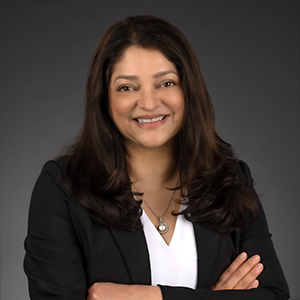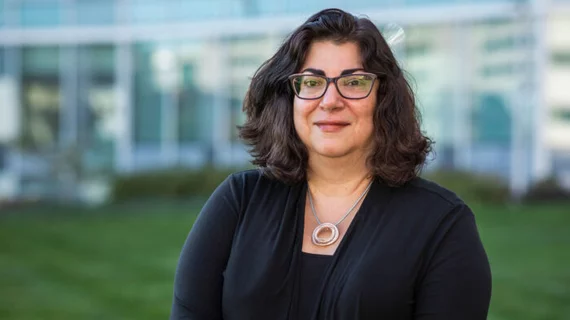In specialty dominated by men, 2 female radiologists assume prominent leadership positions
In a specialty dominated by men, two female radiologists recently accepted prominent leadership positions, according to separate announcements issued Friday, April 28.
The Washington University School of Medicine in St. Louis has named Pamela K. Woodard, MD, as the new head of its Department of Radiology. A national leader in cardiothoracic imaging, the professor of medicine conducted seminal research leading to the use of cardiac MRI in clinical practice.
She’ll assume the role July 1, also serving as a professor and director of the Mallinckrodt Institute of Radiology.
“Dr. Woodard was unanimously selected by our leadership team from a deep and impressive group of candidates,” David H. Perlmutter, MD, executive vice chancellor for medical affairs, said in an announcement. “We believe she can lead us in further defining the career of radiologists and imaging scientists, the role of imaging in personalized medicine, and new strategies for diagnosis and treatment through interventional, minimally invasive and even noninterventional approaches that will advance human health.”
In the new role, Woodard plans to leverage her extensive research, clinical and leadership experience in radiology. Prior to accepting the post, she has served as a professor, senior vice chair and division director at the institute’s research facilities, among other roles. She previously led a team that developed a nanoparticle-based imaging agent for atherosclerotic plaques in blood vessels. And she is involved in the translation of novel PET agents to assess blood flow through heart muscle.
“The Department of Radiology has a long tradition of excellence and innovation in clinical radiology, radiology education and imaging research,” Woodard said in the announcement “I am delighted to lead our world-class faculty and trainees in radiology into the next decade in collaboration with our partners at BJC HealthCare and across the medical campus.”
Woodard succeeds Richard L. Wahl, MD, who has led the department for nine years and will continue piloting a research lab as a professor in the department.
Another hire in California
Meanwhile, City of Hope—one of the largest cancer research and treatment operations in the U.S.—has named Chandana “Sandy” Lall, MD, MBA, as its new chair of diagnostic radiology.
Her distinguished career spans nearly 30 years, with Lall currently serving as chair and professor of the University of Florida Jacksonville’s Department of Radiology. An expert in abdominal and pelvic oncologic imaging, she has published more than 480 peer-reviewed articles and scientific abstracts.

Lall will assume the post on July 1, also serving as vice dean of clinical faculty affairs. She said her goals will include advancing the organization’s leadership in imaging innovation, patient care and education.
“It is a great honor to join City of Hope’s world-class diagnostic radiology department,” Lall said in an announcement. “I look forward to partnering with my colleagues to integrate the most sophisticated imaging technologies into City of Hope's clinical trials and cancer therapies.”
Lall has received more than 60 recognitions during her career, including fellowship in the Society of Abdominal Imaging and the RSNA’s Honored Educator Award. She also previously served as vice chair and professor of radiology and urology at the University of California Irvine.
“Dr. Lall brings a wealth of experience and expertise to her new dual position at City of Hope,” Michael Caligiuri, MD, physician-in-chief and president of the Duarte, California, organization’s medical center, said in the announcement, calling her a “highly accomplished radiologist whose breadth of knowledge, talent and innovative approach to state-of-the art imaging will elevate the important work being conducted.”
William D. Boswell Jr., MD, has served in the role since 2011 and will continue with the organization as president of the City of Hope Medical Group, also providing support during the transition.
Too few women in the field
The two hires come as radiology struggles to match other medical specialties in gender parity. While women represented more than half of U.S. medical students in 2020, only 27% of first-year rad residents were female, RSNA News reported April 26. The number of women practicing in imaging stayed static at around 25% since 2007.
This has translated to a scarcity of women in leadership roles, the report noted. Only about 13% of all radiology practice leaders are female, including roles such as partner, chair, vice chair and executive committee member. However, a previous study in RSNA’s Radiographics journal charted a slight uptick. In 2010, about 13% of radiology department chairs were women, which climbed to 17% by 2019, with a similar increase in professor positions (17% to 22%).
Experts believe it will take hires like the two announced on Friday to begin encouraging more women into the specialty and then promoting them toward leadership roles.
“I believe much of the lack of interest for female medical students is caused by the significant minority of women in our field and in leadership,” Carina Yang, MD, vice chair of diversity and inclusion in the University of Chicago Medicine’s Department of Radiology, told RSNA News.
“You are less apt to go for a leadership position if no one looks like you and you have no one to compare yourself to,” added Lauren Vassiliades, MD, a rad resident at Northwestern Memorial Hospital in Chicago and head of the university’s Women in Radiology group. “Awareness about the specialty is slowly getting better, but there’s still room for improvement.”

